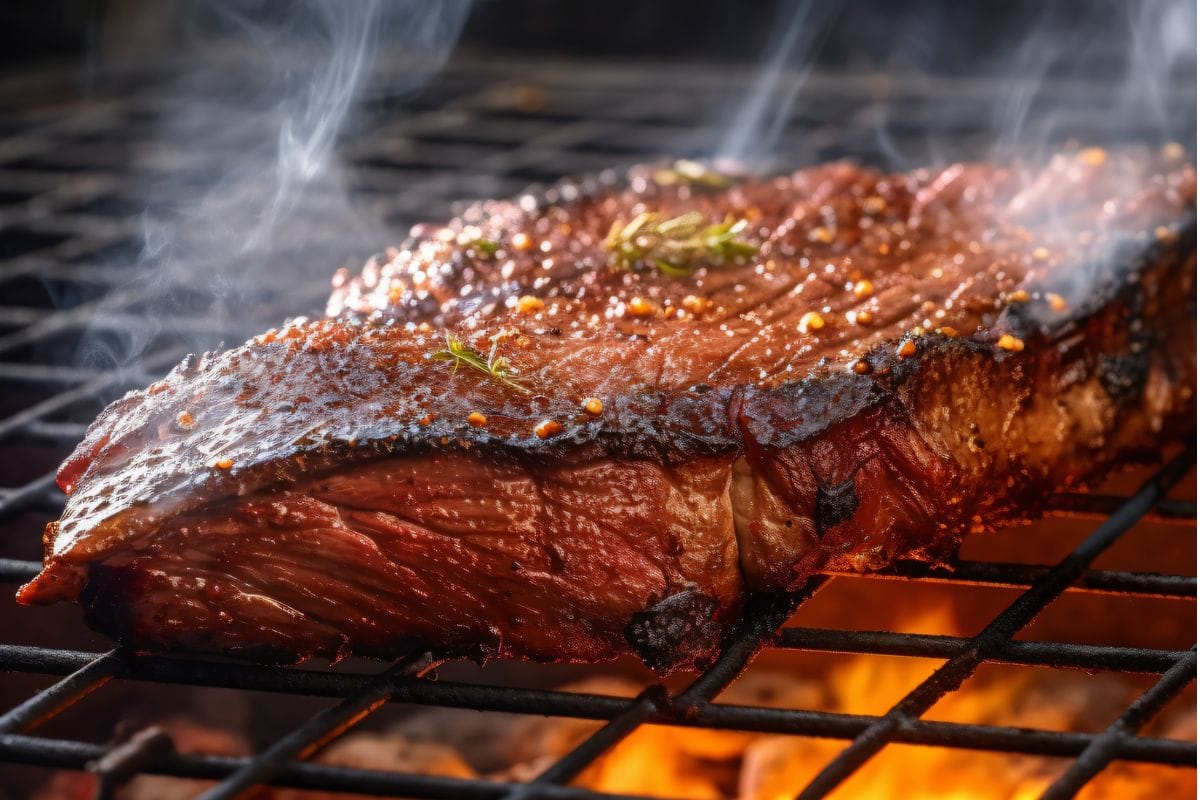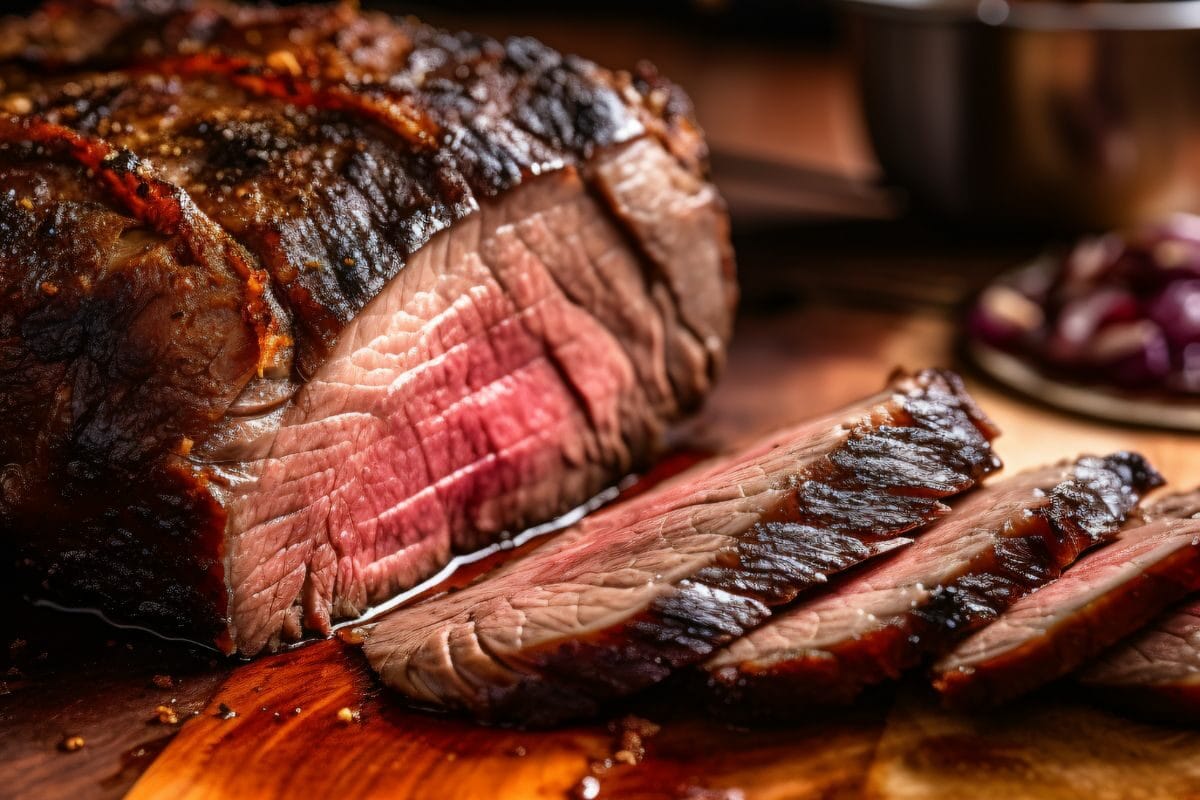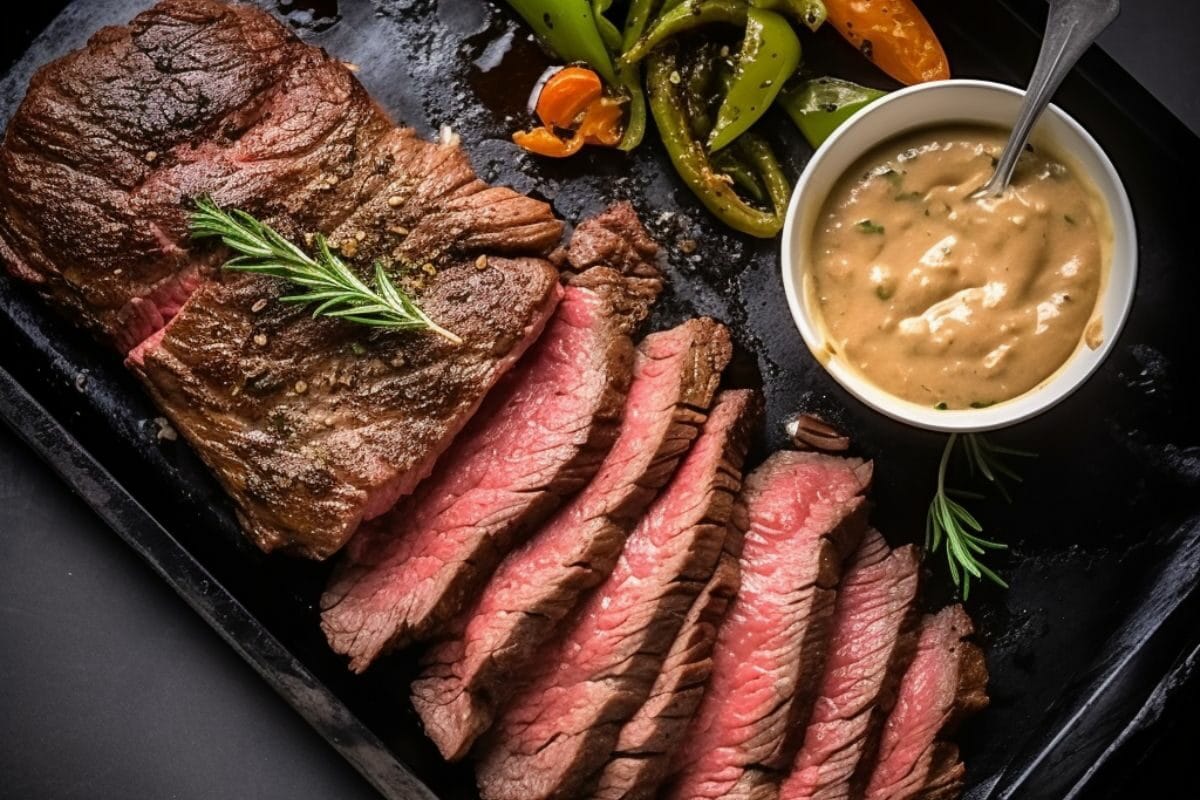It takes around an hour per pound to smoke a brisket at 225°F. Cooking times are approximate when smoking large cuts like brisket – your brisket is done when a probe slides in with almost no resistance. Whole-packer briskets weigh 12 to 14 pounds or more. Smoking at 225°F makes for a long day of cooking, but you’ll be rewarded with incredibly tender, juicy brisket with a kiss of smoke.
I’m a brisket fiend. It’s a fickle slab of beef – it took me years to hone the perfect technique for smoking it. Ultimately, I decided that the best-tasting brisket is made by smoking it at 225°F.
In this post, I’ll cover how long to smoke a brisket at 225°F. I’m also dropping everything else you need to know about smoking brisket. Let’s get to smoking!

I want to start off by saying that you shouldn’t rely on time when smoking meat. It’s a rough guideline, not a set-in-stone law. There are a lot of variables (your smoker, the humidity outside, and more) that can impact how long it will take to smoke a brisket.
To truly know when a beef brisket is done, monitor the internal temperature. I shoot for 203°F, but every slab of beef is different. Some may be done at 190°F, others at 210°F.
When a thermometer probe or toothpick slides into the brisket with little to no resistance – like a hot knife going through butter – your brisket is done cooking.
Related Reading
A temperature probe or a meat thermometer is your best friend when smoking meat. You need to monitor the internal temperature of your beef. That way you’ll know when it’s done cooking, when to wrap it (more on wrapping in a bit!), and how fast it’s cooking.
Some smokers come with meat thermometers, but most don’t. Investing in a good thermometer is money well spent. Aside from your smoker, it’s the most important tool you have as a home chef.
Instant-read, digital versions are easy to use and read. Check the brisket temp every hour or so with one.
There are also dandy leave-in thermometers specifically designed for smoking meat, like this one by Armeator. Buy a good smoking thermometer and you’ll never regret it, I promise.
Figure an hour per pound as a rough guide. A whole-packer brisket weighs around 12-14 pounds, while the flat and point cuts (the two muscles that make up a brisket) are around half that. So a full brisket will take 12-14 hours to smoke. If you’re smoking a point or flat, your cook will take around 6-7 hours.
Smoking a full-packer brisket is a day-long chore. Your best bet is to start your cook early if you’re having company.
If you’re smoking a flat or point, you’re looking at around 6-7 hours to cook it.
I also highly recommend resting your whole or partial brisket for 2-4 hours after cooking. You’ll need to factor in the rest time before you can carve and serve the beef. More on how to rest in a bit!
Related Reading

A 14-hour cook and 4-hour rest might have you tempted to boost your cooking temperatures to speed things up. Don’t do it! Your best bet for brisket success is smoking it at 225°F.
Brisket is made up of connective tissue and is tough, sinewy muscle. It is a gristly piece of meat. When you cook any meat at a higher temperature, the tissues will contract, often releasing liquid. When this happens, the meat becomes tougher – bad news if you’re smoking a brisket.
When brisket is smoked low and slow at 225°F, the fibers will relax instead. When it cooks for long enough, to a high internal temperature of around 203°F, the gelatin in the brisket melts. This adds flavor and moisture to the meat. That’s where the magic happens.
It isn’t just about knowing how long to smoke the cut and at what temperature. You’ve got to keep your smoker temperature consistent.
The easiest way to do this is to invest in a thermometer for your cooking chamber. Many grills and smokers are already equipped with a hood thermometer. I’m skeptical of the readings on these. Dome thermometers are notoriously unreliable, particularly on cheaper grills. I own a grill with a thermometer that’s off by 75° or more!
Splurge on an accurate thermometer, and you’ll never doubt your temperature readings again.
Related Reading
Yes, you can absolutely overcook or over-smoke a brisket at 225°F. This can happen anytime you overshoot the ideal internal temp for brisket (190°F-210°F, with 203°F being my sweet spot).
Most new cooks tend to undercook their brisket, not overcook it. There is a lot of bad BBQ advice on the internet. Cook your beef until it is toothpick tender for mouthwatering ‘que.
I can’t talk about time and temperature without also mentioning the dreaded stall. Around 160°F, the meat stops rising in temperature. For hours. And hours. Up to 6 hours is not unheard of.
The stall happens because of a process known as evaporative cooling. The meat “sweats” as moisture is pulled from inside the brisket to the surface. This liquid cools the meat, which means the internal temp stops climbing.
The stall makes a long cook even longer. Many pit bosses (including most competition teams and BBQ joints) push through the stall using a technique known as the Texas Crutch.
The Texas Crutch is a simple, genius invention. Simply wrap the brisket in aluminum foil or pink butcher paper when the meat stops rising in temperature. The moisture cannot evaporate and cool the meat, which allows your brisket to push past the stall.
Before wrapping the meat, some people will spritz the brisket with beef broth, apple cider vinegar, or a similar solution from a spray bottle to keep the brisket moist. I don’t spritz because I’m worried about disturbing the bark.
Instead, I put butter or a tasty liquid (beer, apple cider, vinegar – whatever pleases you) in the wrap. This creates a moist cooking environment, which means you end up with brisket that’s juicier and more tender.
The Texas Crutch softens the bark. Some pitmasters don’t wrap at all – they prefer chewier bark. Others wait until after to stall to wrap, which helps the bark darken thanks to the extra cooking time but still reaps the benefits of tenderizing the meat. Play around with different methods and see which is your favorite.
Related Reading

Rest your brisket for 2-4 hours in an insulated cooler after cooking. I wrap mine in foil or paper (if I didn’t use the Texas Crutch), then wrap it in a clean towel to help keep it warm. During the rest, rendered fat and collagen are reabsorbed into the muscle fibers.
Related Reading
Around an hour is a good rule of thumb, but internal temperature and the toothpick test are better indicators of “doneness.”
There’s not a huge difference, but I like to keep my cooker at 225°F. It’s the most foolproof way to cook this fickle cut of steer.
It depends on the size of your brisket. A full-packer brisket will take around 4 to 6 hours to hit 165°F. If you’re only smoking a point or flat, it should hit 165°F in 2 to 3 hours while cooking at 225°F.
Related Reading
That’s it! All you need to know about temperature and time when preparing brisket. Figure an hour of cooking time per pound, though in BBQ, it’s better to cook to temperature than time. Monitor your brisket’s internal temp with a good thermometer, and pull it from the cooker around 203°F.
Armed with this knowledge, you are going to turn out a delicious cut of meat every time.